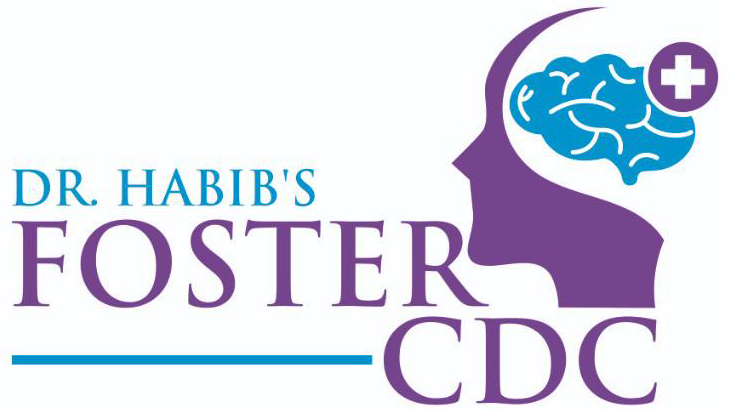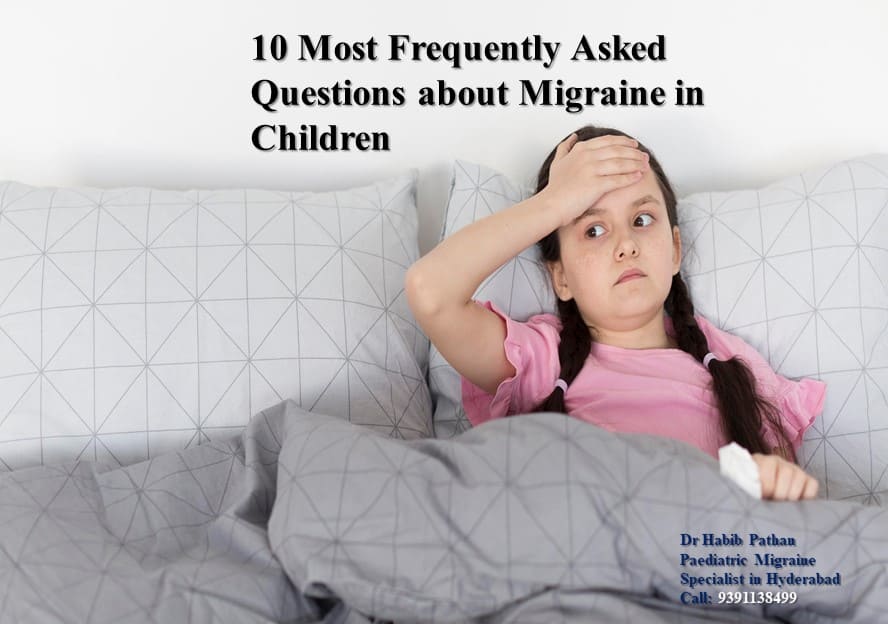Dr. Habib Pathan Pediatric Migraine Specialist
Childhood Migraines
When a pediatric migraine specialist talks about headaches and migraines in children, it looks quite absurd to many parents – as they think only fever and illness can cause headaches in children. But, when you club the percentage of migraine sufferers from school-age children to teenagers, it is surprising around 40%. Which means, contrary to our notion, migraines are quite common in children. Furthermore, almost 50 percent of migraine sufferers have their first migraine before the age of 12. Let us try to answer some of the most frequently asked questions about migraines in children.
Why does my child get headaches?
Most of us think that headaches can occur only in adults, but headaches do occur in children as well. Though they are common, but not serious. Lack of sleep, infection, fever, head injury, stress and anxiety can cause headaches in children. If you notice frequent headaches with progressively worsening symptoms in your child, then consult a paediatric neurologist for better diagnosis and treatment.
How do I know if my child has a migraine?
Migraine is not just a typical headache. It is a neurological condition associated with throbbing and pulsating pain, dizziness, vomiting, nausea, sensitivity to sound, light, touch and odours. The other atypical symptoms of migraine include stomach upset and changes in mood. Before or during the onset of migraines, your child may want to avoid bright lights, odours and sounds and want to lie down in a dark room.
Is migraine just a bad headache?
First of all, migraine is not just a bad headache because its symptoms are unique as they come with aura – sensitivity to light, sound, touch and odours. Children with migraine also have nausea, vomiting sensation, dizziness with a severe headache. Migraines are common in children as they can begin as early as 18 months of age.
Does food cause migraine in my child?
Some foods trigger migraine in children – such as chocolates, citrus fruits, ice cream, caffeine, aged cheese and meats, spicy foods, foods containing monosodium glutamate (MSG) and also aspartame.
What can a child take for migraines?
Over-the-counter pain killers can help ease migraine and headache, but consult your child neurologist to know about the dose. Doctors recommend giving these painkillers to your child as soon as a migraine begins. However, experts warn against excessive usage of these medicines as they could lead to rebound headaches.
Can growth spurts cause migraines?
There are some migraine triggers including exercise, heavy physical activity, exposure to sunlight and bright light, weather changes, very loud sounds, very cold foods, stress, anxiety and lack of sleep. Migraines can also be triggered by growth spurts.
Are migraines a sign of puberty?
By the time boys reach puberty they have had experienced more headaches than girls, but the episodes of migraines become less frequent with the onset of puberty in boys. In the case with girls, the frequency of migraine episodes increases after the onset of puberty. In the case of girls, after puberty estrogen hormone levels increase causing more frequent migraines.
How long does a migraine last in a child?
Migraine is often associated with other symptoms like sensitivity to light, odours and sounds. It may last for up to three to forty-eight hours in children. A child can experience three to four episodes of migraine in a month. Nearly about 5 to 10% of pre-school and school children and 30% of teenagers can suffer from migraines.
Can a 5-year-old have migraines?
There have been reported cases of migraines in children as young as 18 months old. Nearly about 5 to 10% of preschool children suffer from migraine. Nearly about 5% of children as young as 4 years old suffer from migraine. In fact, almost 50 percent of migraine sufferers have their first migraine before the age of 12. In the majority of the cases, a child’s headache is not a sign of any serious health issues – but it has to be addressed by a pediatric migraine specialist to improve quality of a child’s life and his or her academic performance.
What is childhood abdominal migraine?
Abdominal migraine (AM) is a sudden uncontrollable attack of moderate to severe abdominal pain – which can be localized or diffused, midline or periumbilical. Abdominal pain can be associated with nausea, vomiting, headache, anorexia and pallor (pallidness). AM can be a common cause of chronic and recurrent abdominal pain in children. Unaddressed or untreated abdominal migraine during childhood can lead to migraines later in life.
If you have any additional queries regarding migraine in children, you can call on this number: 9391138499
Fix an appointment and meet me personally.
Dr. Habib Pathan
Pediatric migraine specialist



